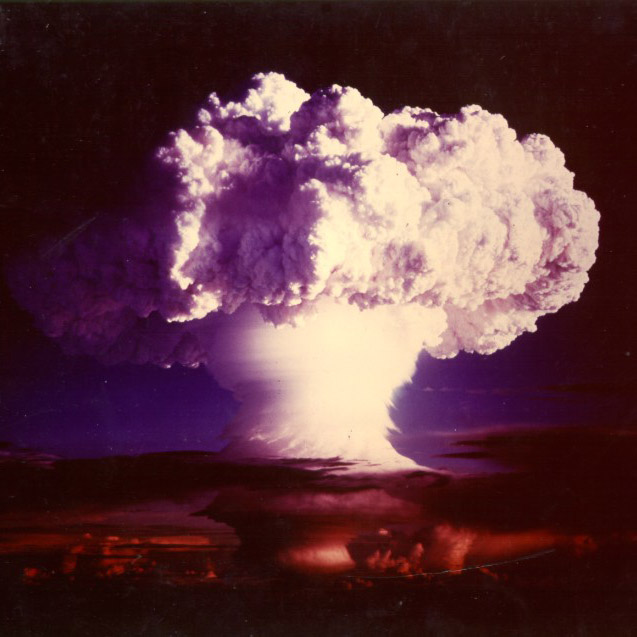कैलीफोर्नियम
99
Es
समूह
लागू नहीं
आवर्त
7
ब्लॉक
f
प्रोटॉन
इलेक्ट्रॉन्स
न्यूट्रॉन
99
99
153
सामान्य गुण
परमाणु संख्या
99
परमाणु भार
[252]
द्रव्यमान संख्या
252
श्रेणी
ऐक्टिनाइड्स
रंग
लागू नहीं
रेडियोधर्मी
हाँ
Named after Albert Einstein
क्रिस्टल की संरचना
लागू नहीं
इतिहास
Einsteinium was discovered as a component of the debris of the first hydrogen bomb explosion in 1952.
It was identified by Albert Ghiorso and co-workers at the University of California, Berkeley in collaboration with the Argonne and Los Alamos National Laboratories, in the fallout from the Ivy Mike nuclear test.
The new element was produced by the nuclear explosion in miniscule amounts by the addition of 15 neutrons to uranium-238.
It was identified by Albert Ghiorso and co-workers at the University of California, Berkeley in collaboration with the Argonne and Los Alamos National Laboratories, in the fallout from the Ivy Mike nuclear test.
The new element was produced by the nuclear explosion in miniscule amounts by the addition of 15 neutrons to uranium-238.
इलेक्ट्रॉन प्रति शेल
2, 8, 18, 32, 29, 8, 2
इलेक्ट्रॉन कॉन्फिगरेशन
[Rn] 5f11 7s2
Einsteinium is the first divalent metal in the actinide series
भौतिक गुण
अवस्था
ठोस
घनत्व
8.84 g/cm3
गलनांक
1133.15 K | 860 °C | 1580 °F
क्वथनांक
-
विलय ऊष्मा
लागू नहीं कि.जूल/मोल
वाष्पीकरण ऊष्मा
लागू नहीं कि.जूल/मोल
विशिष्ट ऊष्मा क्षमता
- जूल/ग्राम•केल्विन
पृथ्वी की पपड़ी में प्रचुरता
लागू नहीं
ब्रह्मांड में प्रचुरता
लागू नहीं

चित्र साभार: Wikimedia Commons (National Nuclear Security Administration)
Einsteinium was first observed in the fallout from the Ivy Mike nuclear test
सी ए एस संख्या
7429-92-7
PubChem सी.आई.डी. संख्या
लागू नहीं
परमाण्विक गुण
परमाणु का त्रिज्या
-
संयोजी त्रिज्या
-
इलेक्ट्रोनेगेटिविटी
1.3 (पाइलिंग पैमाना)
आयनीकरण ऊर्जाएं
6.42 eV
परमाणु आयतन
28.5 से.मी.३/मोल
तापीय चालकता
0.1 W/cm·K
ऑक्सीकरण स्थितियां
2, 3
उपयोग
Einsteinium is mainly used for scientific research purposes.
The rare isotope einsteinium-254 is favored for production of ultraheavy elements.
Einsteinium-254 was used as the calibration marker in the chemical analysis spectrometer of the Surveyor 5 lunar probe.
The rare isotope einsteinium-254 is favored for production of ultraheavy elements.
Einsteinium-254 was used as the calibration marker in the chemical analysis spectrometer of the Surveyor 5 lunar probe.
Einsteinium is harmful due to its radioactivity
समस्थानिक
स्थिर आइसोटोप
-अस्थिर समस्थानिक
240Es, 241Es, 242Es, 243Es, 244Es, 245Es, 246Es, 247Es, 248Es, 249Es, 250Es, 251Es, 252Es, 253Es, 254Es, 255Es, 256Es, 257Es, 258Es